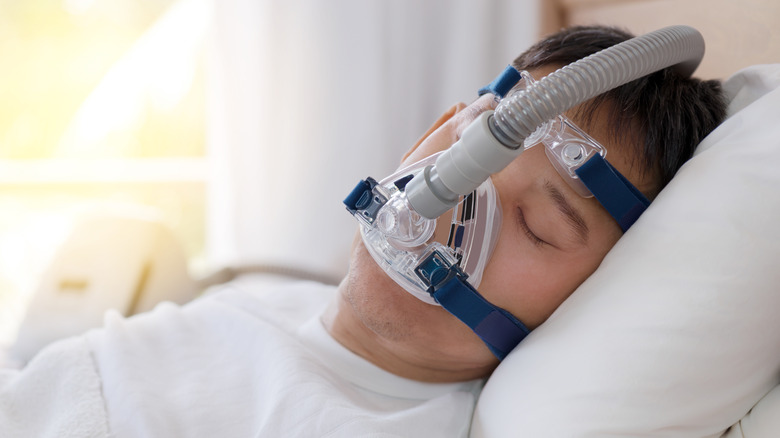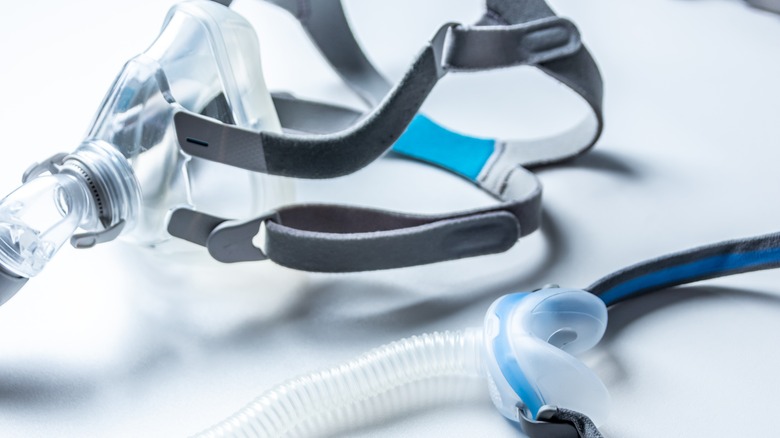This Is How A CPAP Machine Really Works
A continuous positive airway pressure machine, better known as a CPAP machine, is commonly used for people with sleep disorders, like sleep apnea. CPAP machines were invented approximately 40 years ago by Dr. Colin Sullivan thanks to inspiration from his mother's vacuum cleaner, Verywell Health reports. Once he realized how beneficial pressurized airflow could be, he began administering experiments on dogs with obstructed airways, leading to the creation of the CPAP machine for human patients (via The Lancet).
Before CPAP machines were invented, sleep disorders were treated by undergoing a surgical procedure known as tracheostomy. During this procedure, doctors would create a hole in the front of a patients neck near the windpipe, allowing for greater airflow, according to Johns Hopkins Medicine. However, the invasiveness of the procedure made patients hesitate. So Dr. Sullivan decided to try low pressure airflow from a mask to treat one of his patients, which opened the man's airways and allowed him to fall into a deep sleep (via Lancet). Dr. Sullivan then tested the mask technique on several other patients before publishing his findings.
How a CPAP machine helps you sleep
Since the invention of the first CPAP machine, different types of CPAP masks have been created, like a full face mask and a nasal only mask. Despite different mask types, CPAP machines feature a motor to help pressurize air while you sleep. According to Healthline, a tube connected to the machine sends pressurized air through an air filter before it reaches your nose or mouth, depending on your CPAP mask type.
If there are any blockages in your airway, the pressurized air will help push them out. In turn, your airway opens, allowing more oxygen to flow in while you sleep. Those with sleep disorders often wake up in the middle of the night because they can't breathe. With a CPAP machine, you can ensure your breathing remains constant while you sleep. According to Mayo Clinic, the pressure on your CPAP machine can be adjusted, but your doctor will likely recommend a setting for you based on your needs.


